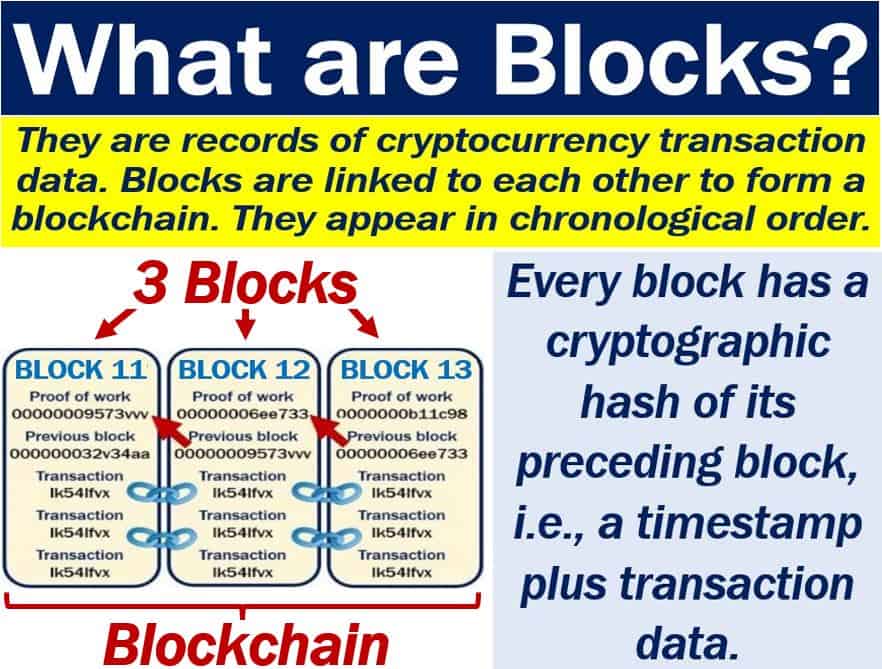Blocks are records, which together form a blockchain. In the world of cryptocurrencies, blocks are like ledger pages while the whole record-keeping book is the blockchain. A block is a file that stores unalterable data related to the network.
Blocks hold all the records of valid cryptocurrency transactions. They are hashed and encoded into a hash tree or Merkle tree.
A hash tree is a tree in which each leaf node has a label with the hash of a data block.
Every block has the cryptographic hash of the block that precedes it in the blockchain. A block, plus all the blocks before and after it, form a blockchain.
The first block in a blockchain is the Genesis Block. It is the only one with no data on the previous block because there is no block before it.
Each block replicates all the data from previous blocks. Rather than have a central ledger with data of the whole system, each block in the whole blockchain has all the data. In other words, blockchains use a distributed ledger system rather than a centralized one.

Blocks make cryptocurrencies ultra-secure
Cryptocurrencies are extremely difficult to hack or manipulate. Carrying out a cyber-attack on a blockchain is virtually impossible.
Fiat currencies and cryptocurrencies have completely different setups. Fiat currencies or fiat money are currencies that governments declare as legal tender, such as dollars, euros, etc.
Dollars, euros, etc. have a central authority, a central bank, and centralized ledgers. In other words, fiat currencies have a central place that holds all the data.
With cryptocurrencies, on the other hand, there is no central bank or central ledger. Every block in the blockchain has all the system’s data.
Therefore, to carry out a successful cyber-attack would require hitting every block simultaneously. That is extremely difficult.
That is why it is much harder to make fake cryptocurrencies than fiat currencies. It is much easier for counterfeiters to make fake dollars than fake bitcoins.
The features of blocks make blockchains resistant to manipulation.
Blocks, blockchains, and central banks
Several central banks across the world are looking into the benefits of blocks, blockchains, and distributed ledger technology. The Bank of England, the United States’ Federal Reserve, and other central banks are studying the issuance of cryptocurrency or CICC. CICC stands for Central Bank Issued Cryptocurrency.
In February 2018, the Venezuelan government issued the petro or petromoneda. The petro is a cryptocurrency backed by Venezuela’s oil and mineral reserves. Response to the petro has so far been mixed.
Some economists believe the petro will help the country, which has a 13,000% annual inflation rate. Others, however, insist that it will encourage even higher hyperinflation.
Block explorer
A block explorer is an online tool that allows you to search through the blockchain. With this tool, you can view balances, check confirmations, track transfers, and view network statistics.
Each explorer works only for a specific cryptocurrency. A Litecoin explorer, for example, won’t work on a Bitcoin blockchain and vice-versa.
